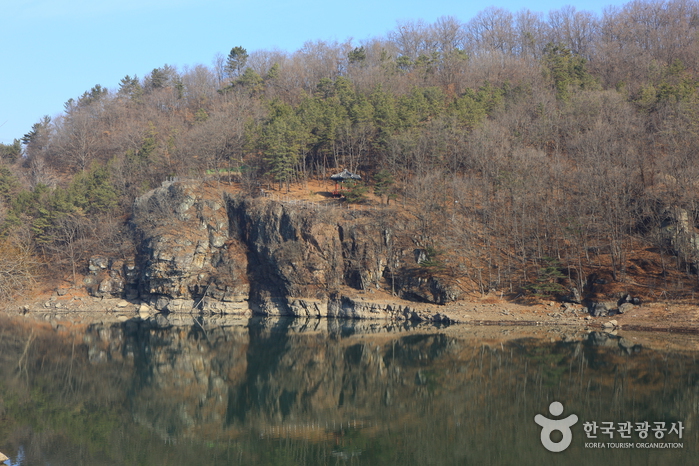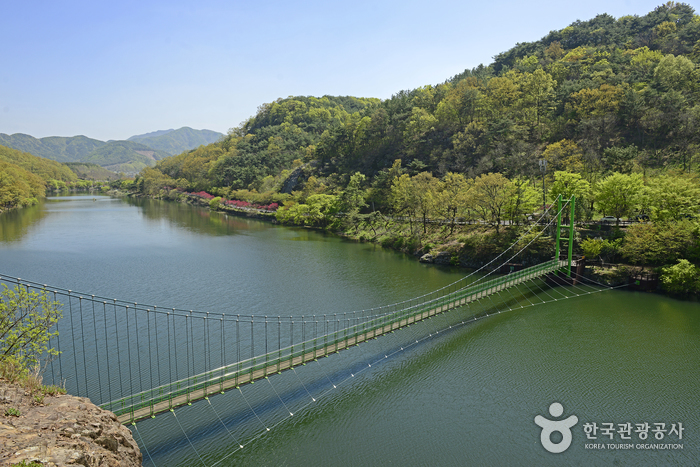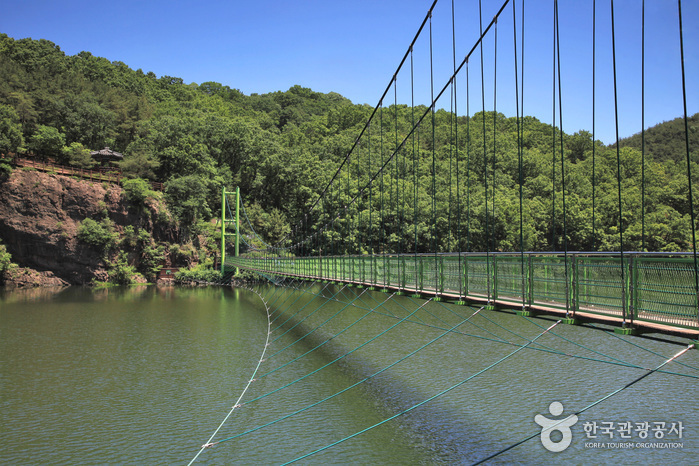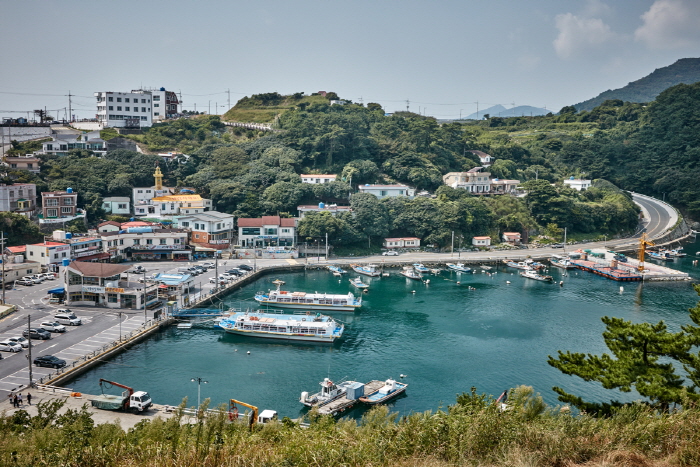Ipgok County Park (입곡군립공원)
Ipgok County Park (입곡군립공원)
 – Homepage
– Homepage
tour.haman.go.kr
– Tel
+82-55-580-4583
Ipgok County Park was once a reservoir used for agricultural water during the Japanese colonization period. Near the reservoir, a dense pine tree forest can be seen along the steep cliff and a trekking path winds through the forest. In spring, cherry blossoms provide picturesque scenery in the vicinity of the area and azaleas bloom on the ridges and cliffs as well. A sports field equipped with stands is located in the upper area.
The reservoir boasts a grand size with a 4-kilometer circumference making it the largest reservoir in Haman. However, it is shaped like a snake, making it impossible to see the starting and ending points at the same time. It is well-known as a relaxing vacation spot among local families.
– Address : Ipgokgongwon-gil, Haman-gun, Gyeongsangnam-do
※ Presentation Information
– Information and Guides
• 1330 Travel Hotline: +82-2-1330
(Korean, English, Japanese, Chinese)
• For more info: +82-55-580-4583
– Parking
Available
– Day Off
* Subject to abrupt closure due to adverse weather conditions.
– Operating Hours
Open 24 hr
– Available Facilities
* Basic facility: Forest park
* Physical activity facilities: 1 site for multipurpose playground, waist-turning machine, sit-up machine, resting deck, etc.
* Convenience facilities: Walking path, pavilion, forest bathing site, wooden chairs, suspension bridge, artificial falls, etc.
* Others: Drinking fountain
– Restrooms
Available



◎ Nearby Tourism Infobox
⊙ Goryeo-dong Historic Site (고려동유적지)
View detailed guide on Korea Trip Guide →

– Homepage
http://www.cha.go.kr
Goryeo-dong Historic Site was founded by Yi O, a scholar of Goryeo who had unwavering loyalty to the Goryeo dynasty even after it fell. The village naturally formed by his descendants. Yi O built a stone fence around the area and called it Goryeo-donghak, meaning the home of Goryeo refugees. Yi never did serve the new government and asked his sons to also never serve the new kingdom or to move his body after he died. For over 600 years, 19 generations of Yi O have remained here, honoring his memory.

![Louis Quatorze – Lotte Changwon Branch [Tax Refund Shop] (루이까또즈 롯데창원)](https://ktrip.blogsailing.com/wp-content/uploads/2025/11/2891048_image2_1-768x576.jpg)

![Tumi [Tax Refund Shop] (투미)](https://ktrip.blogsailing.com/wp-content/uploads/2025/11/2886246_image2_1-768x576.jpg)
![Treksta – Lotte Gimhae Branch [Tax Refund Shop] (트렉스타 롯데김해)](https://ktrip.blogsailing.com/wp-content/uploads/2025/11/2886226_image2_1.jpg)